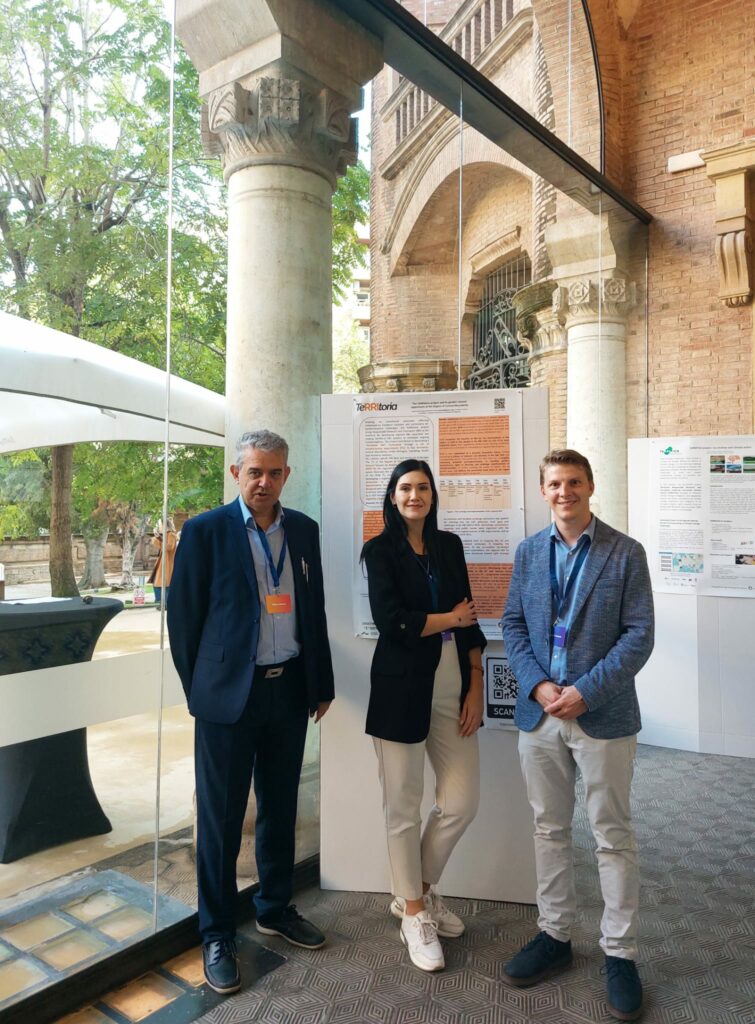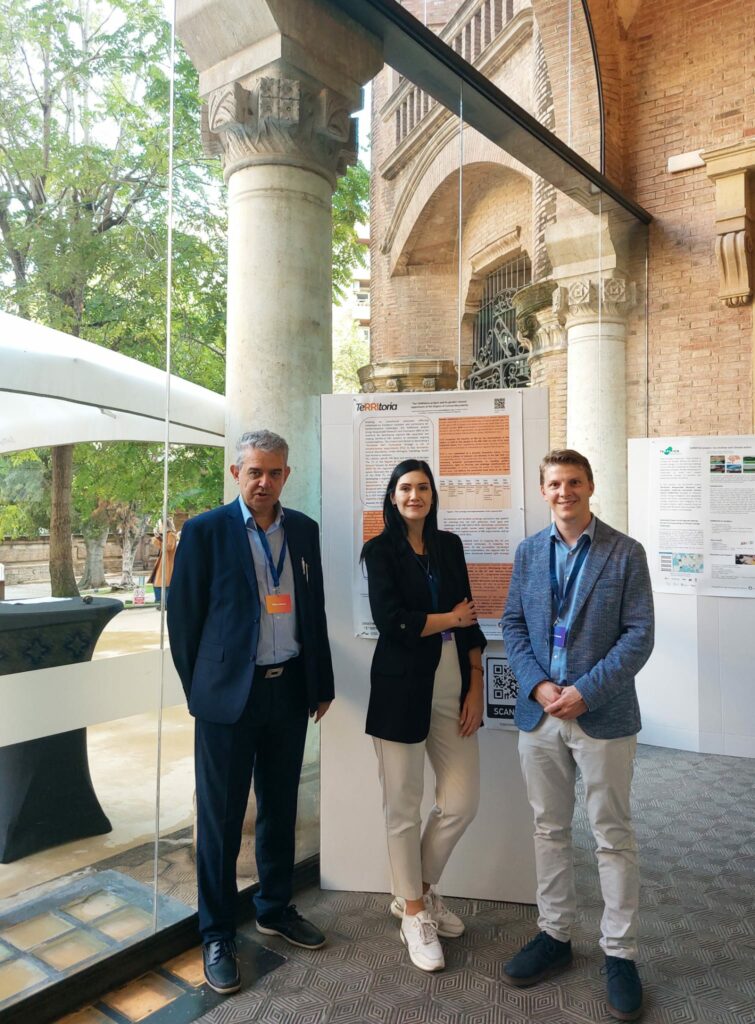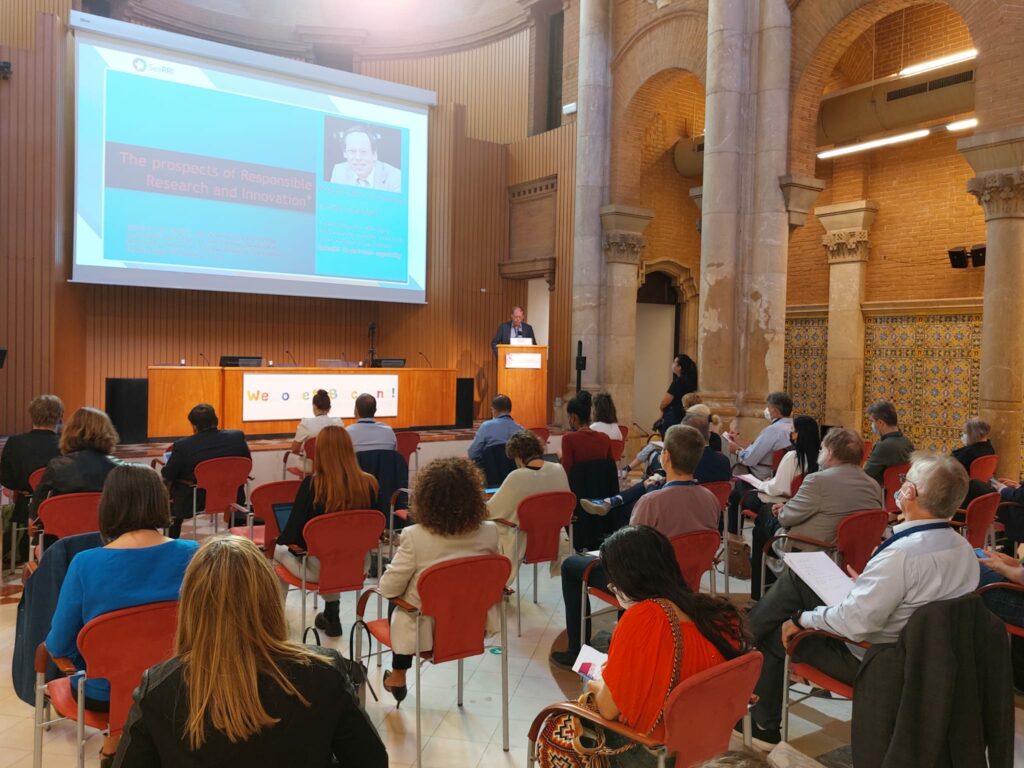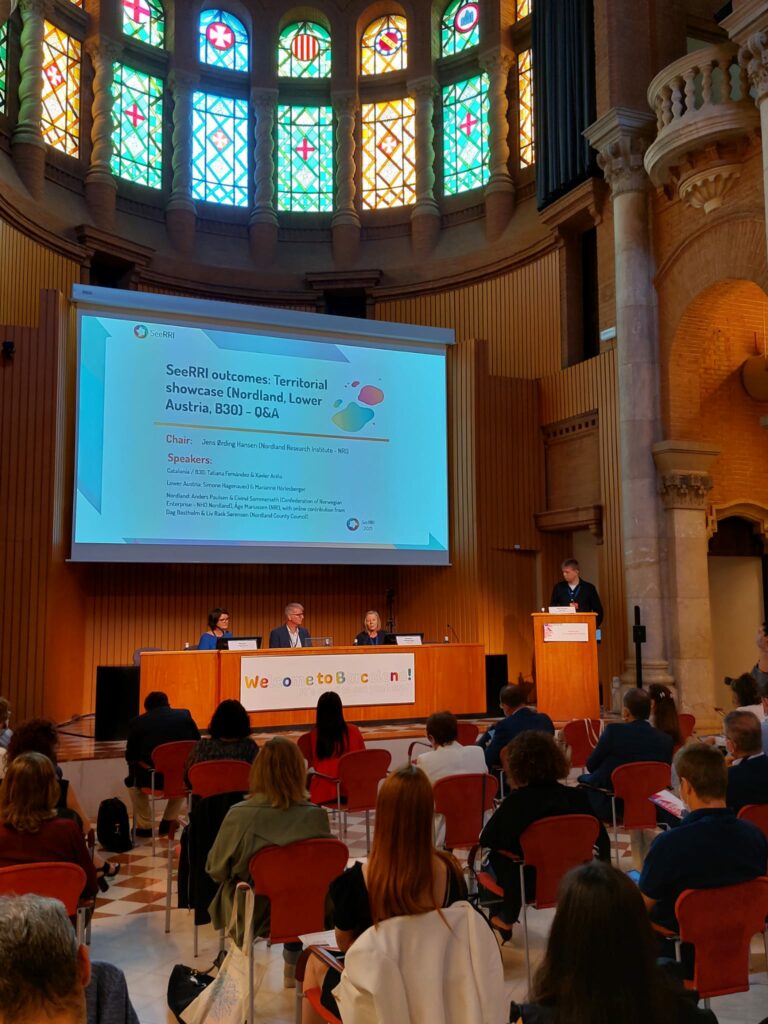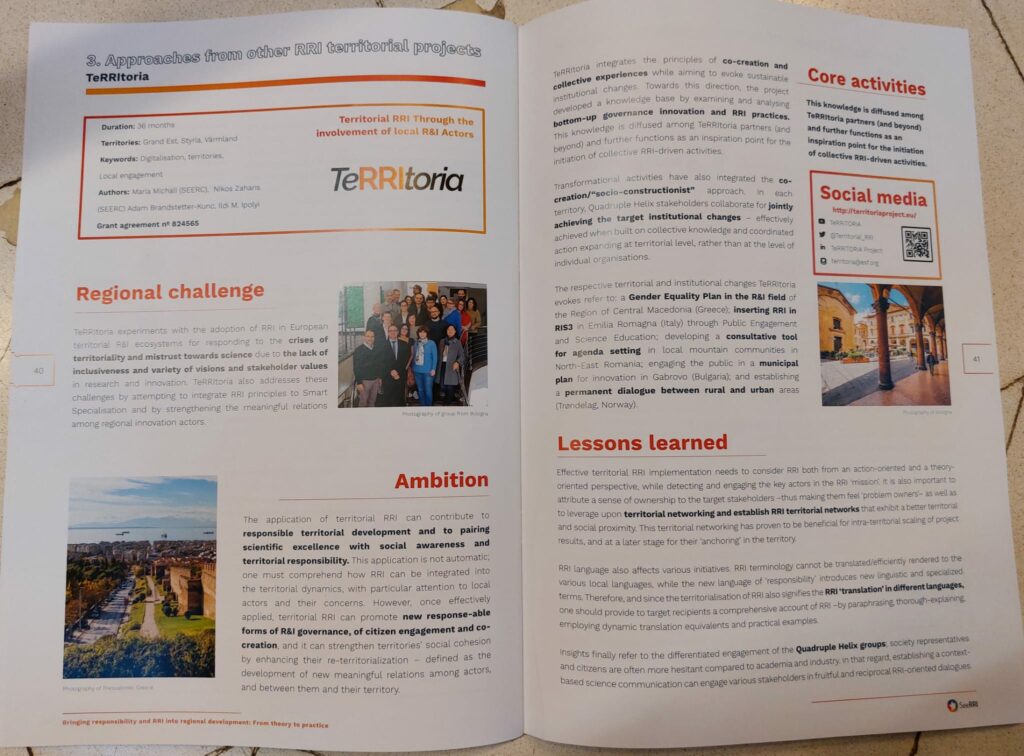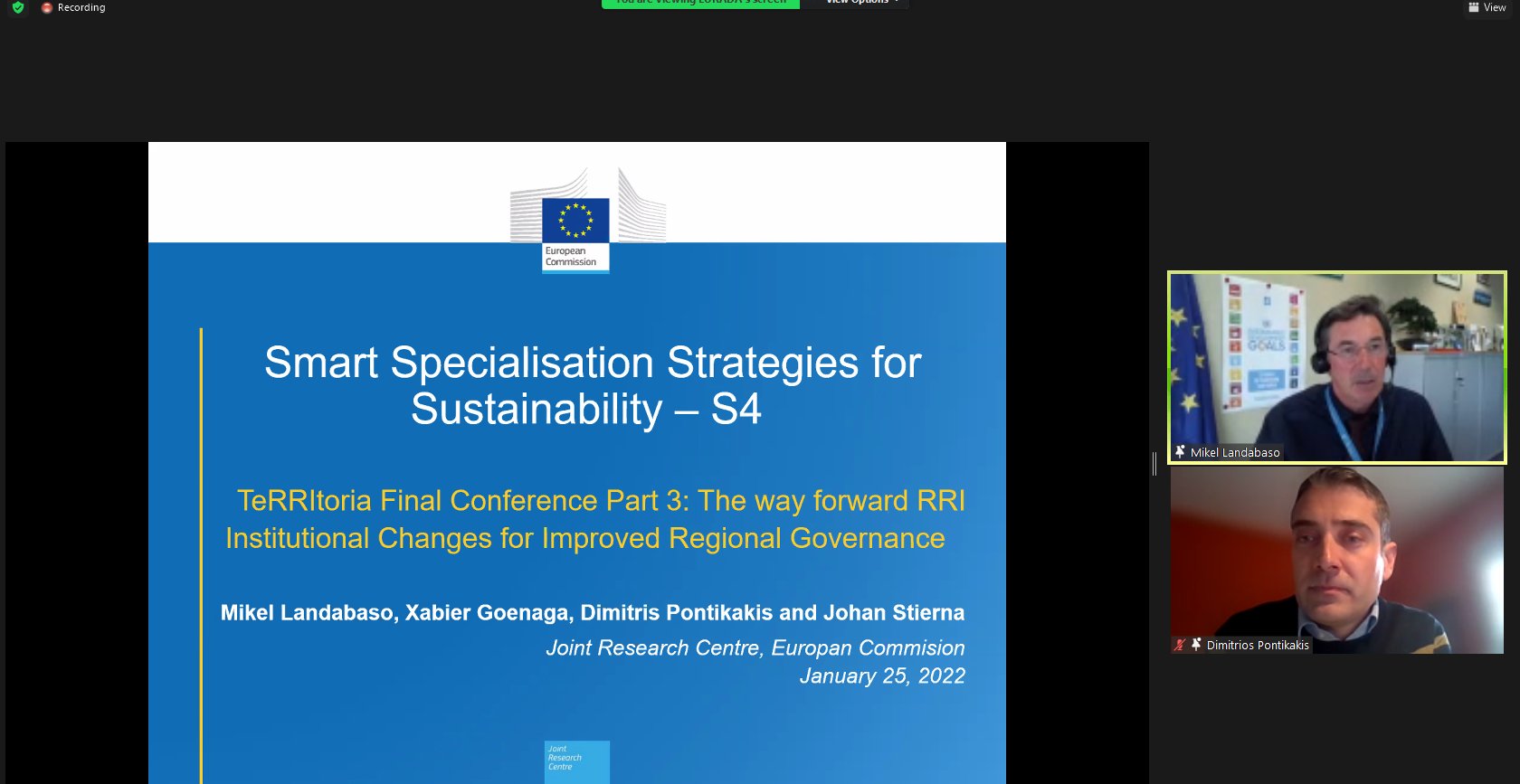TeRRItoria joined the SeeRRI final confence in Barcelona
Last 28 and 29 September, the TeRRItoria project flew to Barcelona to attend the SeeRRI final conference entitled “Bringing RRI into regional planning, from theory to SeeRRI”. The participants dealt with three main topics: Designing responsible regional planning for sustainability: The SeeRRI Way, Understanding EU regional contexts, and The future of RRI in regional planning.
Between the results and discussions that took place during the event, Dr. Nhien Nguyen, the project coordinator of SeeRRI, displayed a graphic representation of the SeeRRI Implementation Pathway, one of the key outcomes of the project. The SeeRRI Implementation Pathway explains the multiple parallel activities that need to be followed under the SeeRRI co-creation model to resolve the challenges faced by territories in their quest to build self-sustaining research and innovation ecosystems in Europe through Responsible Research and Innovation.
Johan Stierna, from the Joint Research Center, illustrated the new Sustainable Smart Specialisation Strategy (S4) which will be built on four blocks:
- Governance
- Strategy
- Continuous Entrepreneurial Discovery Process
- Policy learning and pivoting.
By governance, the European Commission means to lead smart specialisation at the centre of a government for a transversal policy and synergies between policy areas and instruments. Regional governments should develop innovation-driven policies. In addition, they should act on a multi-level approach by involving EU, national, regional and local communities. Strategy means to develop a bottom-up approach for sustainability by 2030. The vision should be ambitious but realistic and should include measurable targets. Continuous Entrepreneurial Discovery means to be able to reinforce the internalisation of universities and create ad hoc curricula with firms, R&I programmes for start-ups and new innovative companies. Lastly, by Policy learning and pivoting, the JRC recommends developing a new impact and result-oriented monitoring process. This is crucial to be able to involve citizens in the monitoring process.
Marta Truco, from the Research Executive Agency of the European Commission and Project Officer of both SeeRRI and TeRRItoria, illustrated the successes achieved in the last 20 years such as the creation of 37 Research Infrastructures, and 7 billion euro in joint programmes spent. She also mentioned some points to be improved in the upcoming years. The 3% target of investment in R&I from the government has not been reached. There is a significant divide in R&I performance across the EU regions. There is a need to improve on translating R&I results to the economy and to support the transition and recovery from Covid-19.
The participants had the chance to participate in a very interesting and dynamic session where the representatives of the three territories involved in the SeeRRI projects (B-30 Catalunya, Nordland, and Lower Austria) illustrated their regional challenges and the lessons learnt during the lifetime of the project by showing some concrete and exciting results.
The event also foresaw the participation of Josep Monràs, president of the B30 Association and Mayor of Mollet del Vallès, a location within the B30 territory (Catalunya), and Javier Lafuente Sancho, rector of the Universitat Autònoma de Barcelona (UAB), who introduced the B30 Innovation Hub, one of the B30 projects that has implemented the SeeRRI Way and reached successful results in terms of introducing RRI into their R&I activities.
The second day of the conference started with an expiring lecture from Rene Vom Schomber, the father of RRI. He pointed out that RRI is a normative response to the current deficit of the global R&I system. He highlighted that there is a need for governance mechanism for outcomes of science, technology and innovation. The R&I community should align science, technology and innovation policy with broadly shared public values. We have to shift the focus from technological potentials to societally desirable objectives. Science has to be improved, made efficient and more responsive to societal challenges.
The new modus operandi for Science should be different. Currently the most diffused approach is “publish as much and as fast as possible” (publish or perish!), where excellence is a self-referential criterion. Ideally, the R&I community should share knowledge and/or data as early as possible in an open collaboration if we would really like to have some desirable social impact.
Rene suggested a new approach based on four pillars:
- Open research agenda,
- Scientific discovery and analysis
- Open review and research assessment
- Knowledge dissemination and outreach
In addition, RRI should address market-failure. R&I community is the subject of change rather than the agent of change. Responsible innovation constitutes a new paradigm for innovation, in which our societal systems institutionalizes collective co-responsibility as a driving force for socially desirable innovation, by giving a direction and whenever possible, shaping its characteristics.
Rene also defined the future of RRI which should be based on the following principles:
- Organising/institutionalisation of collective co-responsibility;
- Open research and Scholarship to change the way we fund and do research;
- Making value-driven innovation a constitutional matter;
- Public governance of the economy to give directionality to innovation;
- Institutionalisation of foresight and technology assessment in public policy: facilitation of alternative futures for public deliberation;
- Mission-oriented research, co-designed and co-created stakeholder driven inclusive research/innovation agenda with a focus on socially desirable outputs.
After Rene’s presentation, a dynamic session on how mutual learning happens between regions in the EU projects was held. These sessions foresaw the involvement of 3 different projects: SeeRRI, TRANSFORM and TeRRIFICA.
In conclusion, after two intensive days, the participants had the chance to have in depth discussions about how to implement RRI at local level. In addition, a poster session was included in the programme. The Greek partner from SEERC had the pleasure to illustrate the teRRItoria project as well as some concrete results coming from the experiment carried out in the Region of Central Macedonia.
The SeeRRI Way is a collaborative process where stakeholders from the quadruple helix work together to share the responsibility of developing and implementing regional innovation strategies focused on shared interests. While the SeeRRI project has been using three specific European regions as testbeds for experimenting with regional planning processes, the tools generated by the project can be used by any territory that wishes to strengthen RRI and make their regional planning more responsible and inclusive.
The final conference of TeRRItoria is foreseen for January 2022. More information about the event will follow in the upcoming weeks.
